February 27th, Capurganá, Colombia.
Every morning as the sun rises over the Caribbean, hundreds of people gather on the beach at Necocli, a small town on Colombia’s north coast. Surrounded by suitcases and black bin bags containing all that they have, or all that they can carry, they are pursuing the dream of a new life in North America.
In front of them is the Gulf of Urabá, the southern-most part of the Gulf of Darién, the body of water that separates northern Colombia and Panama. Most of the isthmus that links South and Central America is impassable swamp and jungle-covered mountain. There is no road. But cross the sea from Necocli to a small Colombian town named Capurganá, on the extreme northern tip of the Colombian part of the isthmus, and Panama becomes accessible on foot. From Capurganá, a few who travel legally catch a plane to Panama but most do not. Most are illegal migrants who hike a mountain pass through the jungle that straddles the frontier between the two countries so they can progress their dream, which for most is to live in the United States or Canada.
In this little reported drama, tens of thousands of people are making the journey every month. According to Colombian migration officials to whom I spoke in Necocli, on current numbers, over 360,000 will make the journey this year, up from 200,000 last year. There is little drama and no fuss attaching to what is going on every day but what is happening is a human drama that is truly epic in scale.
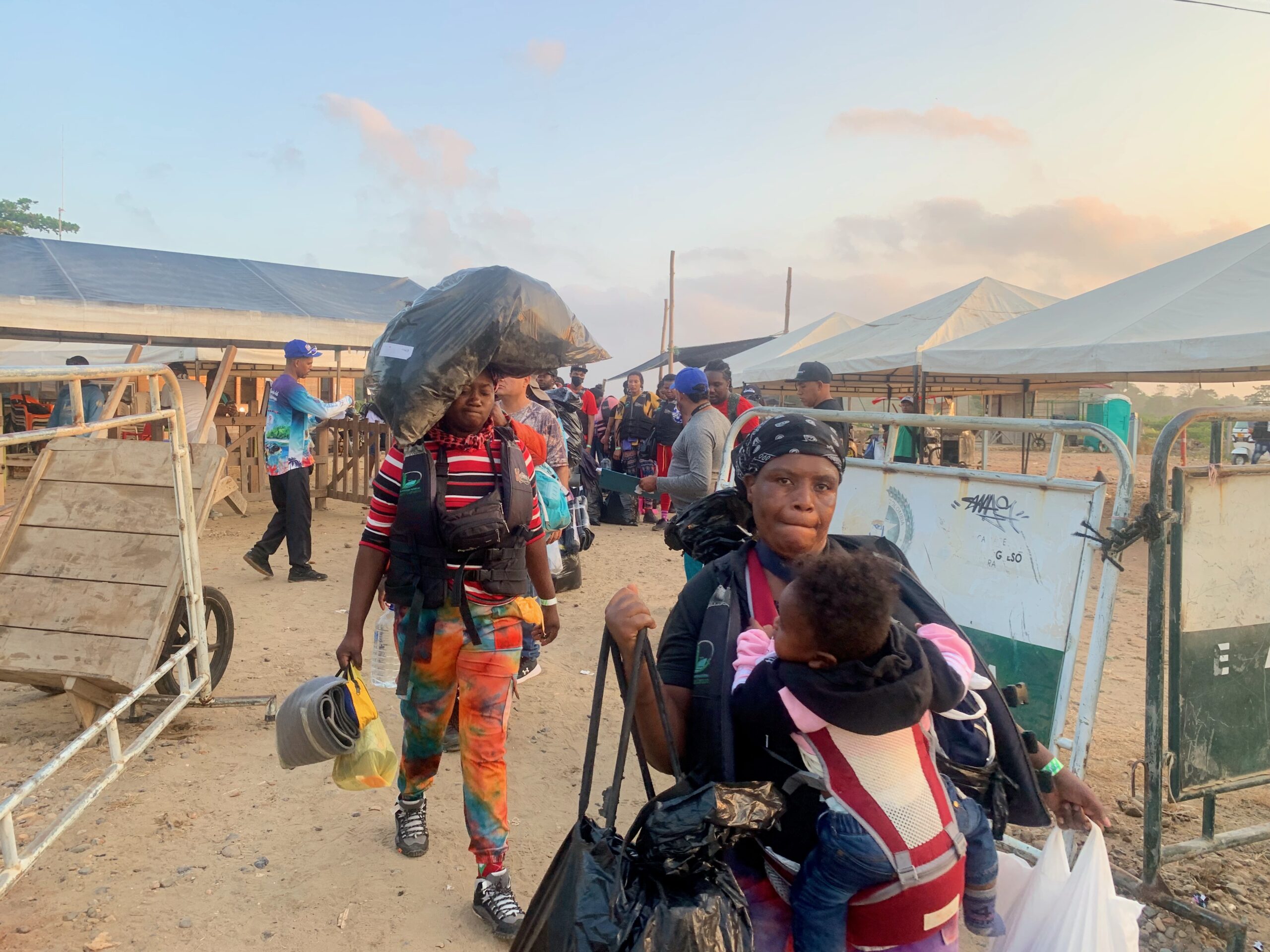
In the middle of the beach at Necocli, the Colombia Red Cross has set up an outreach station. Locals in need of medical and other advice, mainly women, wait patiently between two portable cabins that act as offices-cum-surgeries. In a quiet corner in the open between them, there is a gazebo with a table and two chairs. There, Nelson Laverde, a psychologist, offers counselling to anyone seeking it, mainly migrants.
“The migrants often need emotional support,” he tells me, “and we try to prepare them for when they are crossing the jungle.”
There is a play area for children, brief respite to what must surely be a mystifying and perhaps traumatic experience, and also sockets where mobile phones may be charged.
Beside the Red Cross operation (which is funded by the European Union), a number of private ferry companies operate from a beach dispatch area and a wooden jetty. A similar, though much larger ferrying operation takes place further along the beach where there are signs proclaiming the involvement of the UN’s International Organisation for Migration (IOM). I cannot see evidence of their involvement, however, apart from posters with a QR code giving users internet access.
Some notices there are in Spanish, English and Chinese. One huge sign in English advises migrants about the journey they are about to undertake. Never rest on the bank of a river, they are told; never share a tent with strangers; do not walk alone; it is vital to stay hydrated. Tell loved ones what you are doing and where you are going; do not travel at night. “Help children memorise their place of origin, parents’ names, relatives, and contact number.”
The warnings, and the implications they contain, seem to deter no one. In both locations, every day from about 6am onwards, a mass of people gather, all with one aim in mind — getting across the sea to within walking distance of Panama, the gateway, they hope, to a new life further north again.
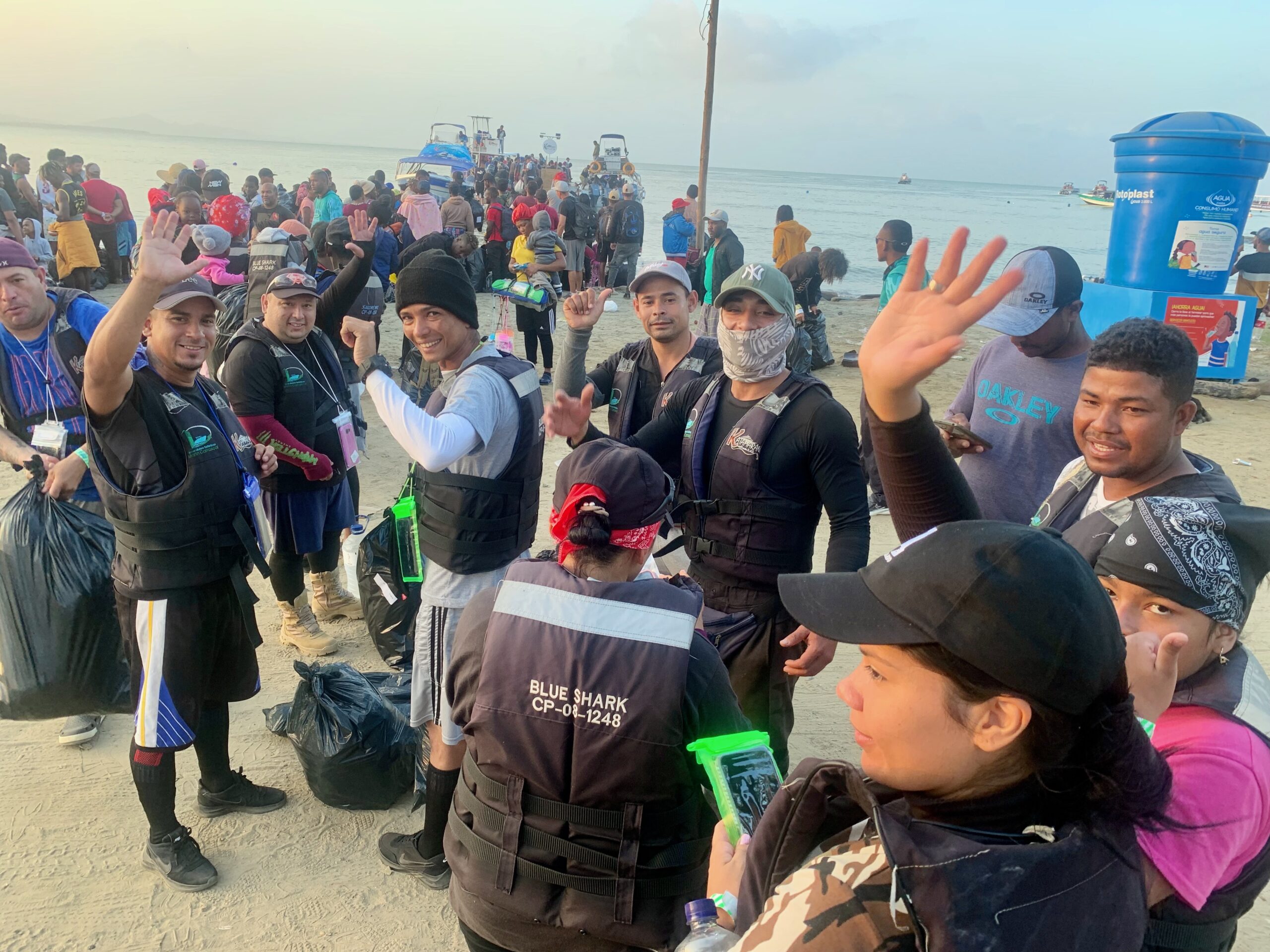
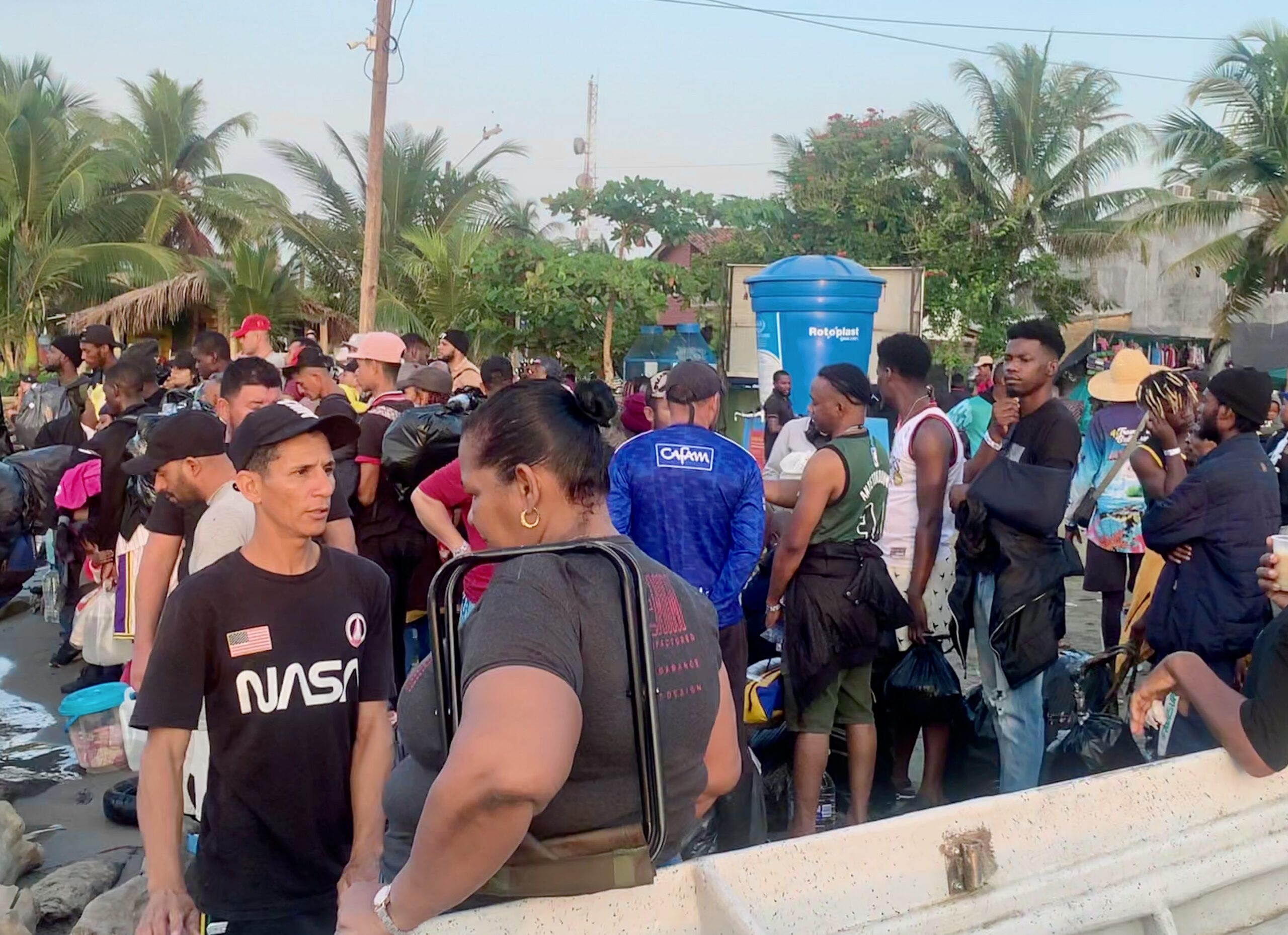
There are many young men in their late teens or early 20s, individuals, pairs of friends, and some in larger groups. There are mothers breast feeding babies. There are whole families — mothers, fathers and children, often very young, some babies in harnesses strapped to one or other parent, some sitting in buggies, some toddlers playing in the sand, presumably not fully unaware of the drama of which they are a part. And everywhere as well, there are people living off the migrants, in one way or another. There are the black bag sellers, flogging bin liners in which to keep belongings dry in the rough seas that lie ahead. Hawkers also offer plastic see-through, hang-around-your-neck pouches for mobile phones. There are fresh fruit, empanada and juice sellers. Stall holders offering camping cookers, small gas cylinders and tents, though they are hardly better than what you’d buy as a play thing for kiddies in your back garden.
And walking among them are the ticket checkers with their clipboards on which are lists of names given to them by the ticket sellers. A one-way ticket costs 85,000 pesos (about €17) and may be bought on the spot or from nearby ticket offices, and despite the seeming chaos, a certain order is maintained. The migrants appear endlessly patient. Once a ferry is ready, names are called from the clipboard manifests and the migrants respond. Buoyancy vests are distributed, cases and black bags are thrown on board and the boats speed off.
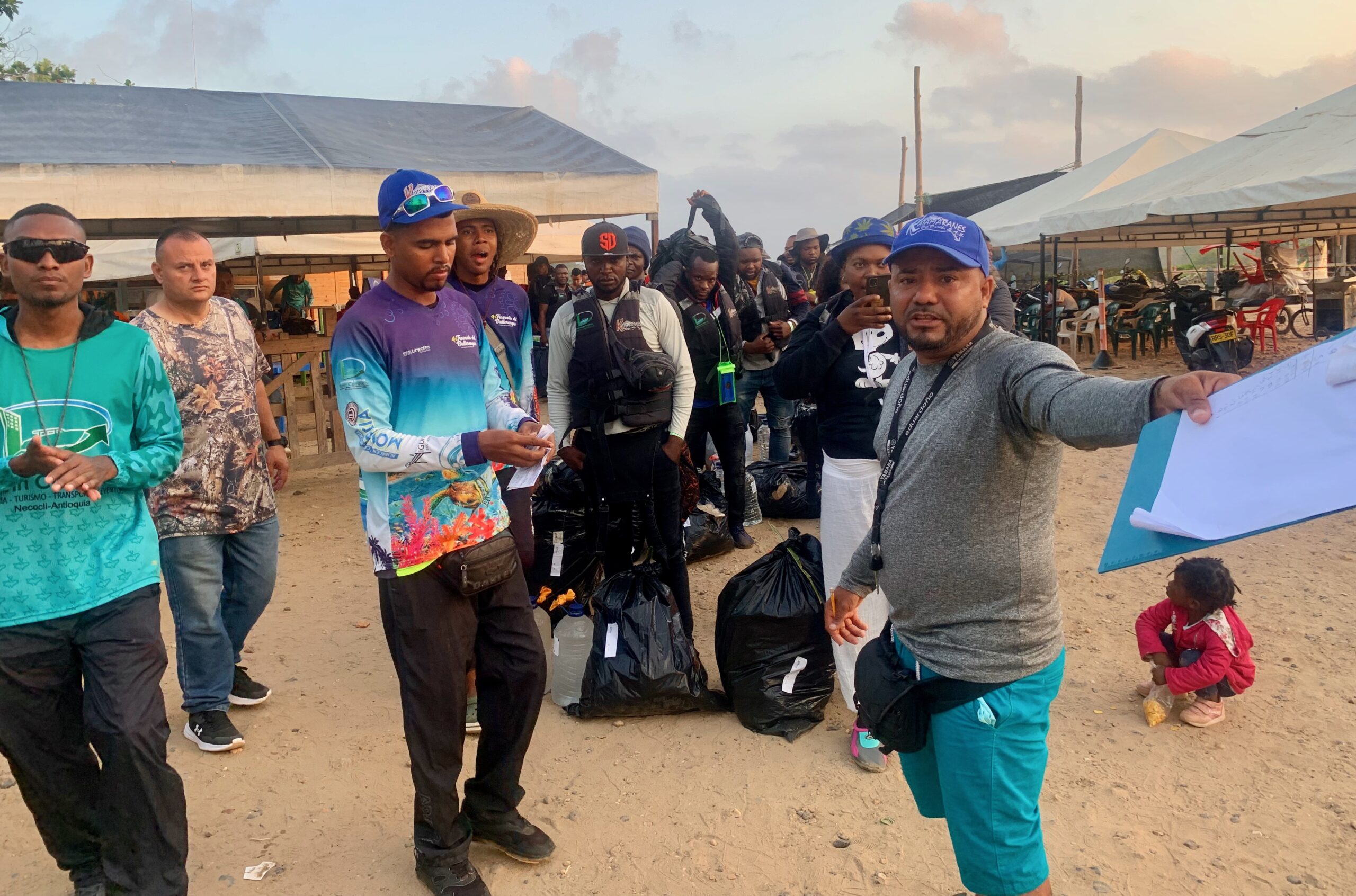
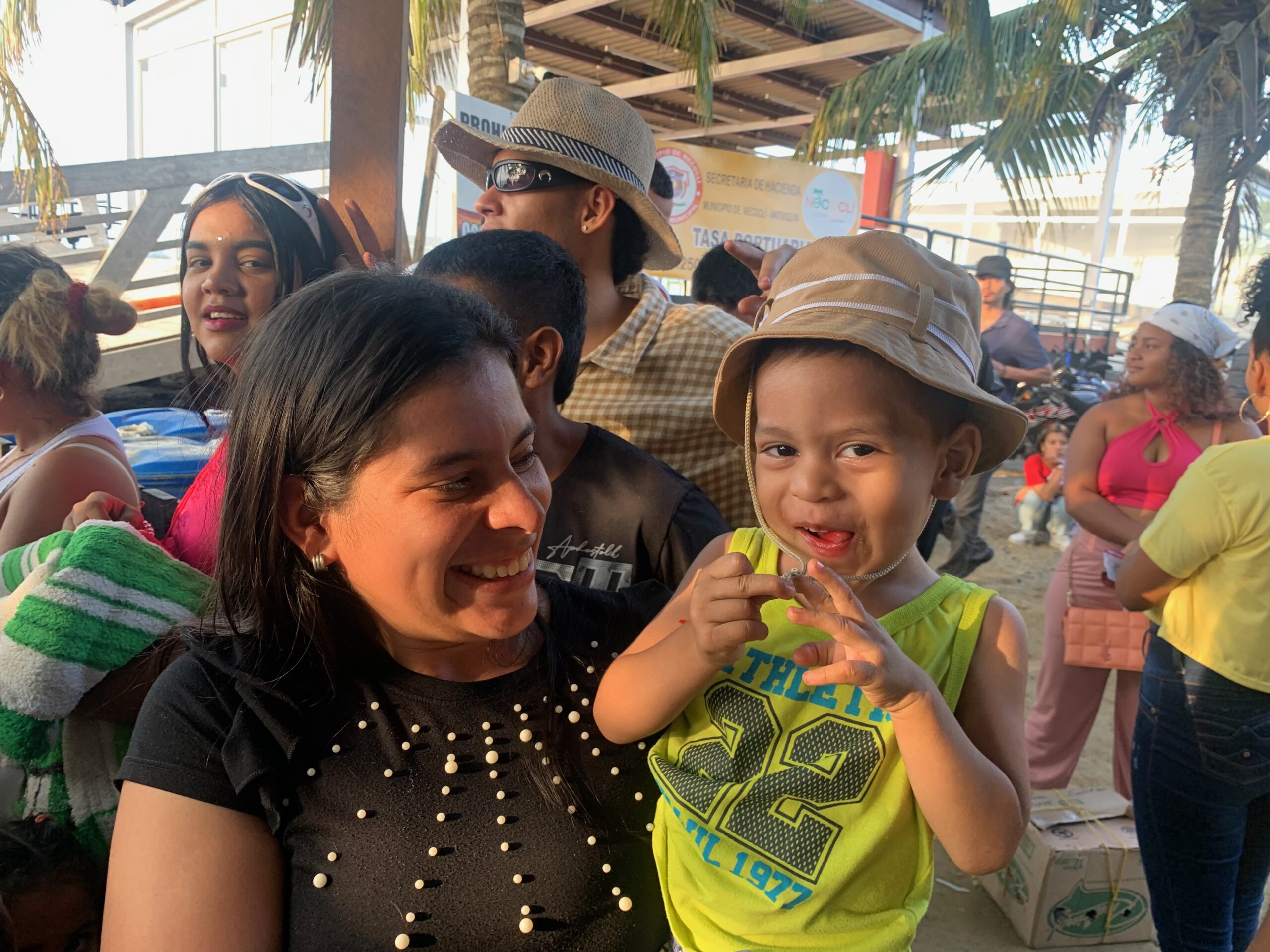
“Mil,” says the migration officer to whom I chatted in a nearby cafe.
“Mil?” I reply, sounding surprised.
“Si, mil — todos los dias,” he says, his two female colleagues nodding in agreement.
That’s 1,000 migrants leaving Necocli every day — which means that, with a consistent flow, 365,000 people a year, and the officer said the numbers were increasing, rather than the opposite. The Red Cross operation was set up in 2021 because of a surge in numbers then and it doesn’t look like closing anytime soon.
Luis (26), a refugee from Venezuela, has a job in Necocli. “I send money to my family,” he told me. Some had died and the others had no other source of income, he added. He wasn’t going further than Necocli but “this is the door of the Darién”, he said looking at the mass of people on the beach waiting to board the ferries.
Conversations with the migrants are snatched. This is due partly, I believe, to the circumstances. While not seeming to be terrified at their situation, nonetheless most are anxious, understandably so but at what I am unsure, though fear of damaging their chances of getting into the Unites States is an obvious surmise; fear of “minders” and those on whom they currently depend is another. Language is a huge barrier also, for which I am at least partly at fault. But all to whom I spoke and who responded were able to indicate that they wanted to go to the US, or Canada, for work, for money. . . for a better life.
The migrants come from many countries but, overwhelmingly from what I saw, they are mainly from Haiti and China. Suggestions by sources in Bogota that Ukrainians had also taken this route to North America were not confirmed by anyone on the ground to whom I spoke. The migration officer listed migrant countries of origin as India, Venezuela, Ecuador, Haiti, Africa (he didn’t specify which African countries) and China. He said some Colombians were also making the journey but most I encountered were travelling between different parts of Colombia to visit family or friends. The woman at the ticket office by the IOM posters said that 75 per cent of people travelling and who bought tickets from her were Chinese, and the tickets were always one way only.
The ferries are long slender boats, each holding 60 to 70 passengers. They are steered from an elevated position high above the deck towards the rear and are powered by four, massive 300 horsepower outboard motors. The boat I took was crammed — 66 of us and three crew — and the crossing was uneventful at first. But then, when it turned north-west and headed for Capurganá on the opposite side of the gulf, the waves began hitting side on because of the prevailing wind and, as we got more and more into the centre of the channel between the two land masses, the rollers got higher and higher. There was maybe 80 meters between each wave crest, and the trough separating them was perhaps 30 meters deep. We rode up the side of each wave to its crest, shooting over it and plunging down, slamming onto side of the trough as though it was a slab of concrete. The resultant crashing sound had some passengers whooping excitedly initially, while others looked worried. Children were frightened and some vomited but the speed never let up . . . Huge quantities of spray drench us all.
After nearly two hours and to the considerable relief of many on board, the ferry pulled into Capurganá. Immediately and before anyone could get off, men on the pier were shouting out services on offer but most of the migrants who land here appear to have arrangements already made. The town is tiny and there are no cars — because there is no road in and no road out. Its perimeters are defined by the sea, on one side, and on the other, the jungle covered mountain. There’s a 800 meter asphalt airstrip and a Britten-Norman twin engine turbo-prop Islander plane, which can seat nine passengers, comes and goes quite regularly. There’s also a small office of the Colombian ministry for external relations where travellers may get their passports stamped. But not many people call there, as far as I could see . . .
Capurganá used to make all its money from tourism but now, anyone I ask about the local economy, says that the flow of migrants, and the money “earned” from them, if that is the appropriate term, plays a more significant role.
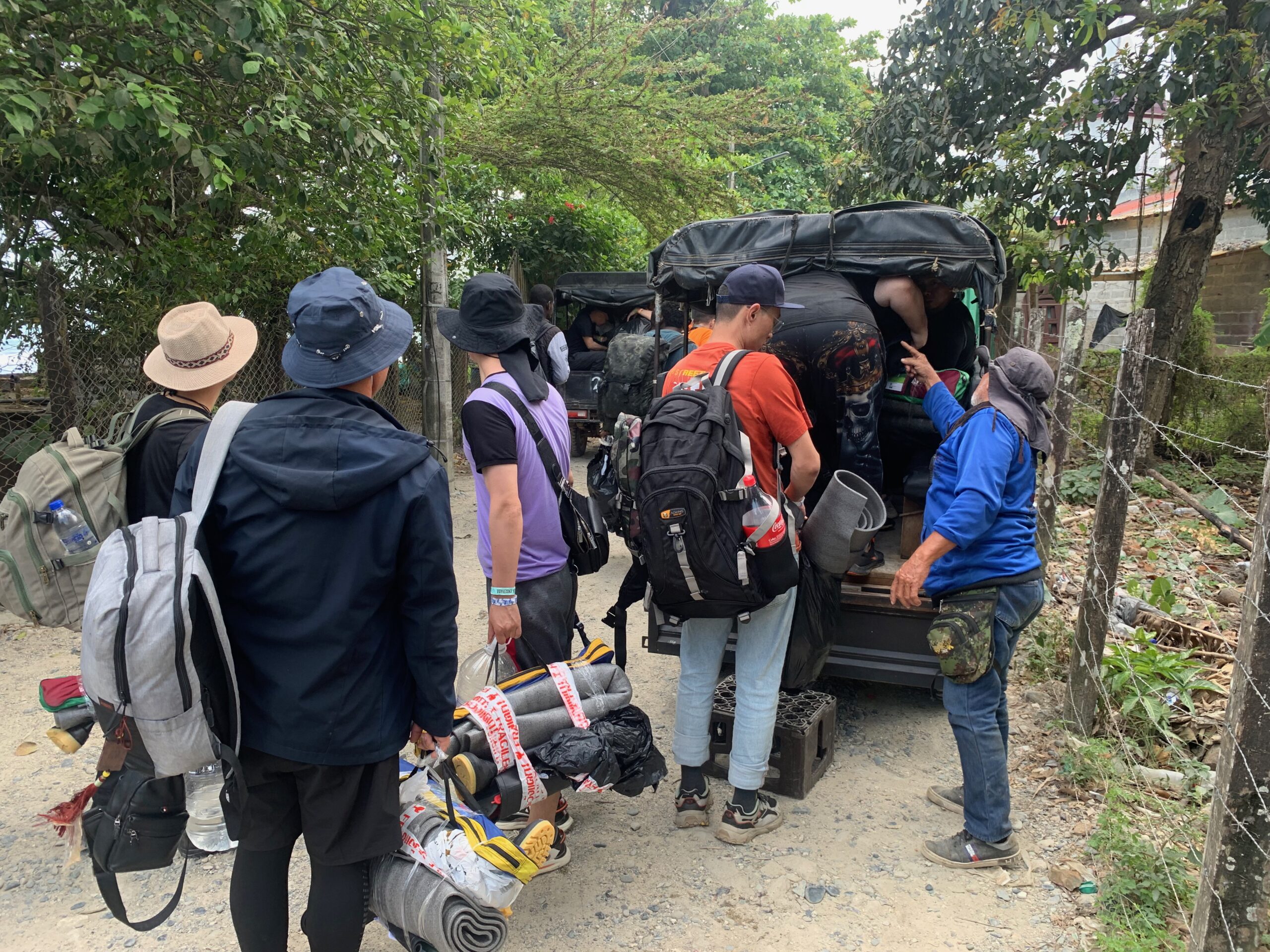
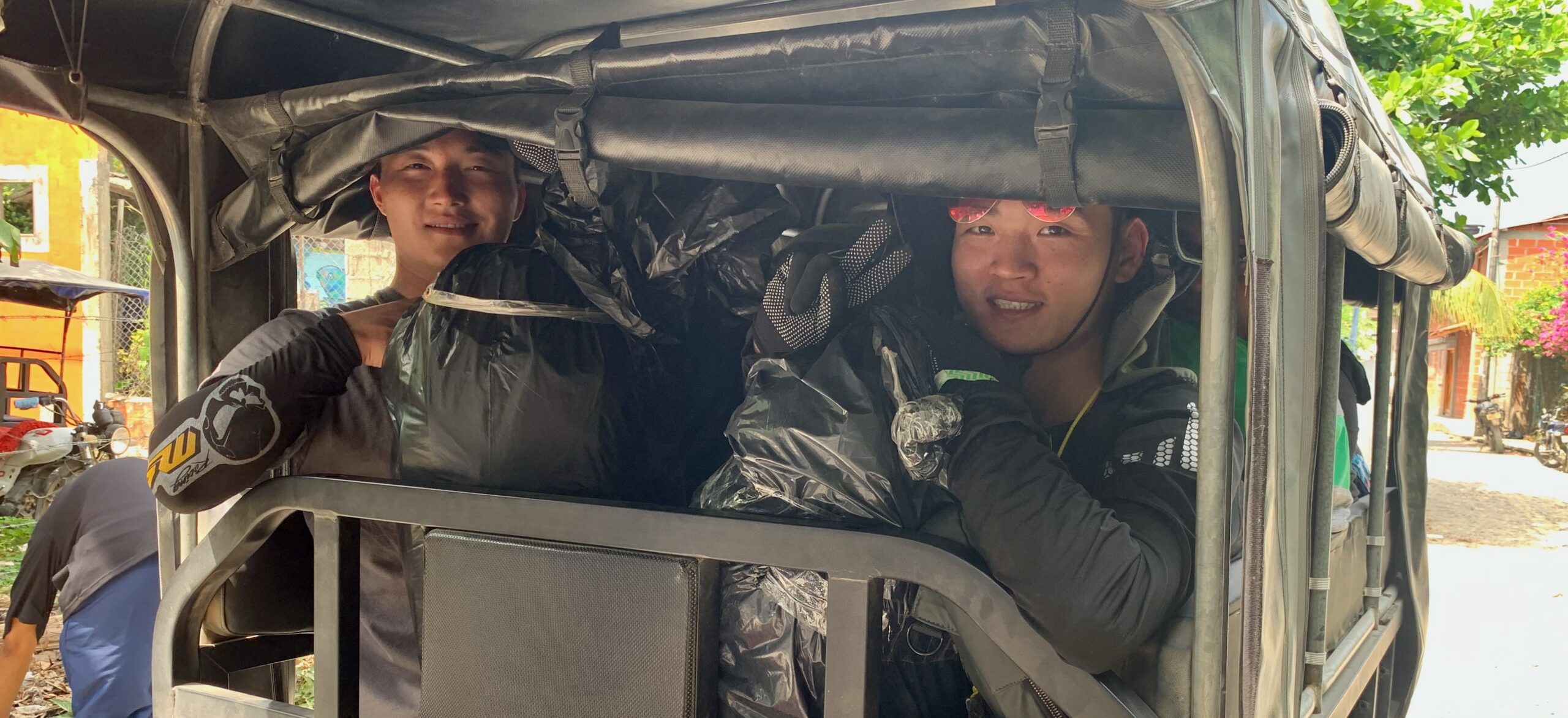
The migrants are directed off the pier and to the left, around the corner past a hotel and left again into a dusty gravel lane, where they are told to wait. A woman with a clipboard starts checking names and within a few seconds, a fleet of what are called “motocaros” arrive. These are three wheeled transporters — essentially a motorcycle front and engine, and a small two wheeled pick-up truck rear, with capacity for luggage and about eight passengers. A burley man with an Abe Lincoln-style beard who is seemingly in charge of the operation doesn’t like me taking pictures but I continue because he is also taking shots of the migrants. For what reason is not apparent but possibly as proof (for whom?) that they arrived and were dispatched to the next stage. If migrants object to my taking pictures, I stop but most do not. There are between 60 and 80 in the batch I observe — men, women and children, and all appear to be oriental in origin.
Two young Chinese men tell me as much about themselves as our mutual language barrier will allow. They say they are from Shanghai and pose for a picture. They appear very happy, a little giddy even, at the prospect of getting to North America — which is their dream. Squeezed into the back of a motocaro, stuffed between black bags, they smile as I take a picture of them.
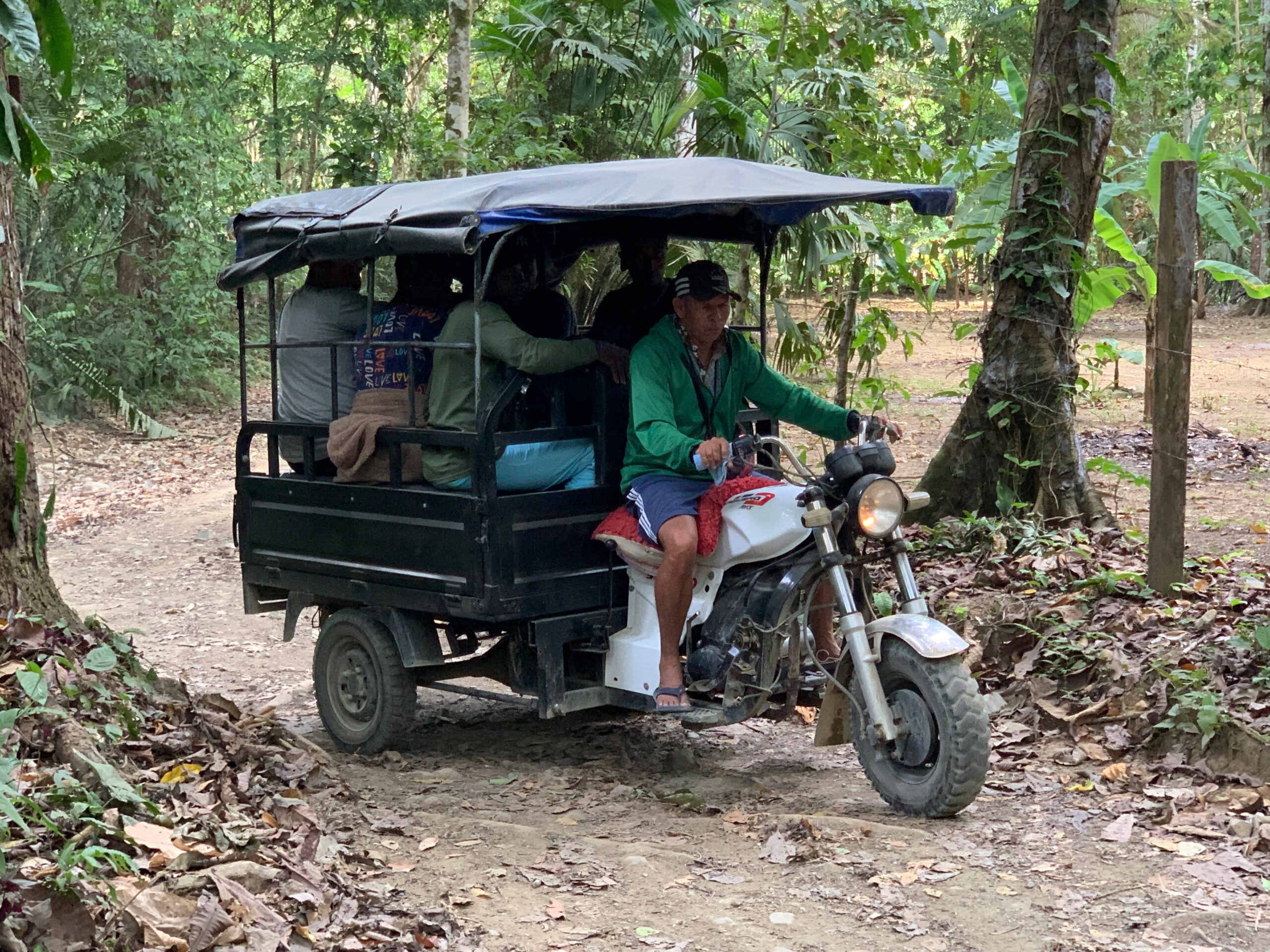
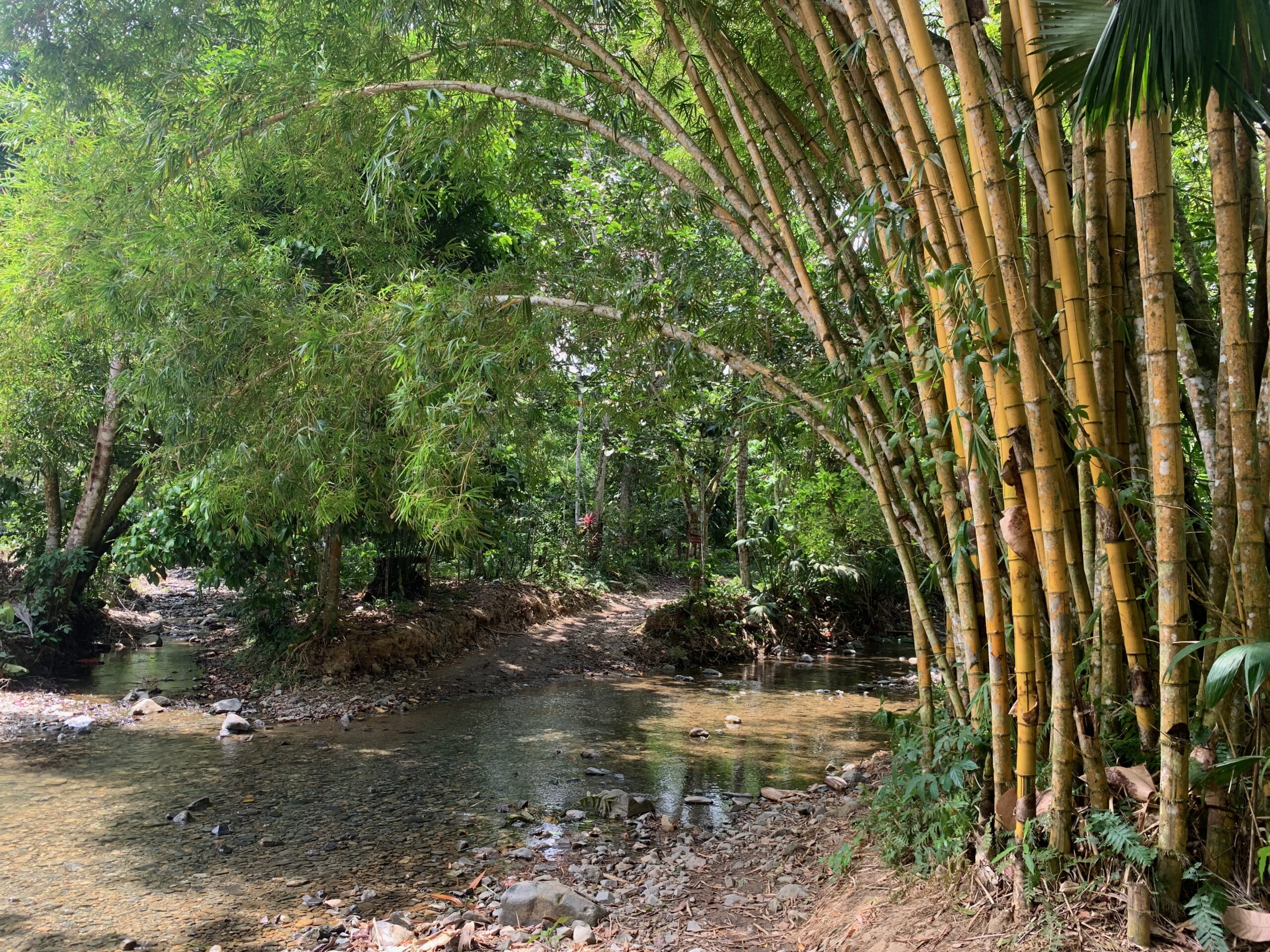
No sooner is each motocaro filled with people and luggage than it is off, whizzing around the corner and along a rough gravel track that runs parallel to the airstrip, and eventually enters another village, named 15 mayo (May 15th is Teacher’s Day in Colombia). It’s a scrofulous dump sort of a place, a single street that starts with a filthy plastic bottle recycling operation and on which most buildings seem half-finished. The motocaros pass through and gradually, the boreen gets more and more stony, and narrower and narrower, until, quite deep into the jungle, it reaches a river where the migrants and their belongings are disgorged.
One of them, a man perhaps in his 40s, tells me he’s from Brazil as he alights a motocaro and wants to get to the United States. He speaks Portuguese and has but a few words of English. He’s with his wife, their two children, both aged two, and a male friend. They don’t want their photo taken, and so I do not. But another man directing operations doesn’t like my presence. Who am I, what am I doing, where’s my wrist band? The Brazilian man and his family have wrist tags, indicators, I assume, that they have paid whoever had to be paid. Don’t I know this is private property? I tell him its public (which it is) and that I am not a migrant but a journalist. The man is with other men. These, I later learn, are the caminandos, the walkers — in other words, the guides who will, they promise, show the migrants the way from here through the jungle, over the mountain and into Panama. A good source, a local hotelier, tells me later that the caminandos charge $180 to $200 for their services (confirming a figure I had heard earlier). He’s not sure how much is paid to organisers of the sea crossing, and indeed the getting to Necocli in the first place, and the motocaro lifts in Capurganá, but he thinks it maybe $300.
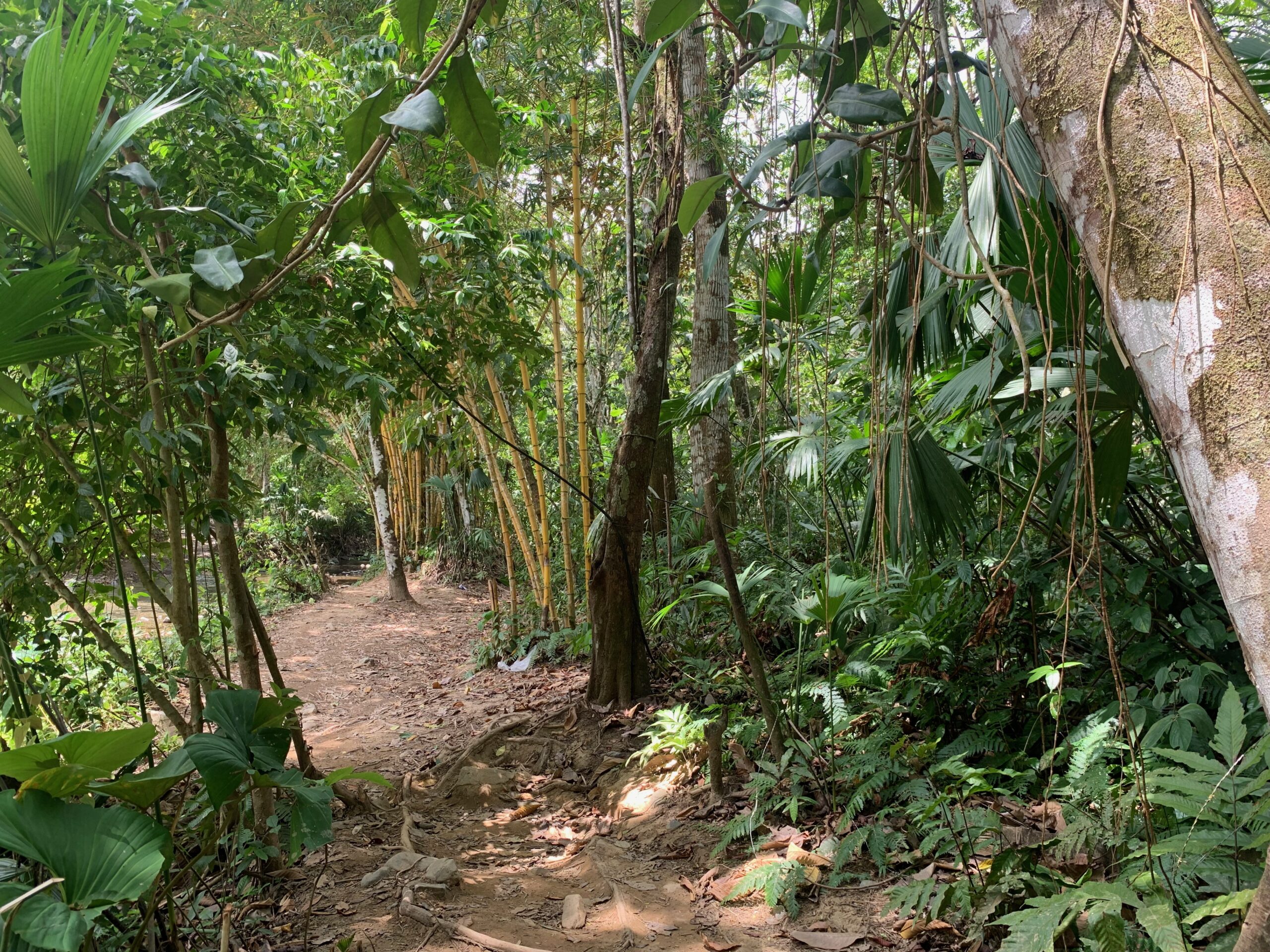
Capurganá is a little over two kilometres from the border with Panama, as the crow flies. Anyone to whom I spoke and who knew the migrant trail said it took at least three days to get to wherever is the end point inside Panama, presumably a settlement or handover place, possibly somewhere with a bus going north. There were two separate routes, I was told, the longer one, which is 100 kms in length, takes up to seven days to trek. From the kilometre or so of jungle I walked through, it is inhospitable, difficult terrain. The jungle is very, very dense, humid and hot It is also teeming with insects, especially at night. According to the IOM, 36 people are known to have died making the trek last year but the figure is believed by the organisation to be much higher. In January this year, the IOM said: “anecdotal reports indicate that many migrants die in the Darien Gap and their remains are neither recovered nor reported, so this figure presents only a small fraction of the true number of lives lost”.
At the river, more and more motocaros disgorged their passenger migrants and their flotsam of cases and black plastic bags. Few look prepared for what they’re about to undertake. Almost none have appropriate footwear or rucksacks. Most are in trainers or even flip-flops. It is telling that one of the last shops they will have passed in Capurganá has a very large display of Wellington boots — no one in the town wears such boots but the shop owner knows they are needed for a hike through the jungle.
I leave the migrants as they begin their hike, disappearing across the river and along a dusty brown path into a sea of jungle green, fortified by hope, a belief that a better life is to be had and that the risks getting it are worth taking. But I really don’t know what lies ahead for them, along the trail they are being led.
And neither do they.
First published in The Irish Times on March 4th 2023.
Since this piece was published, diplomatic sources have told me that the wrist band, which I mentioned above, is a relatively new phenomenon. The belief among NGO/aid organisations is that the bands are being used by the so called Glan de Golfo, a paramilitary criminal outfit making money from migrants. The colour of the band denotes the money paid by the wearer and, hence, the level of “service” they are to get from the traffickers.
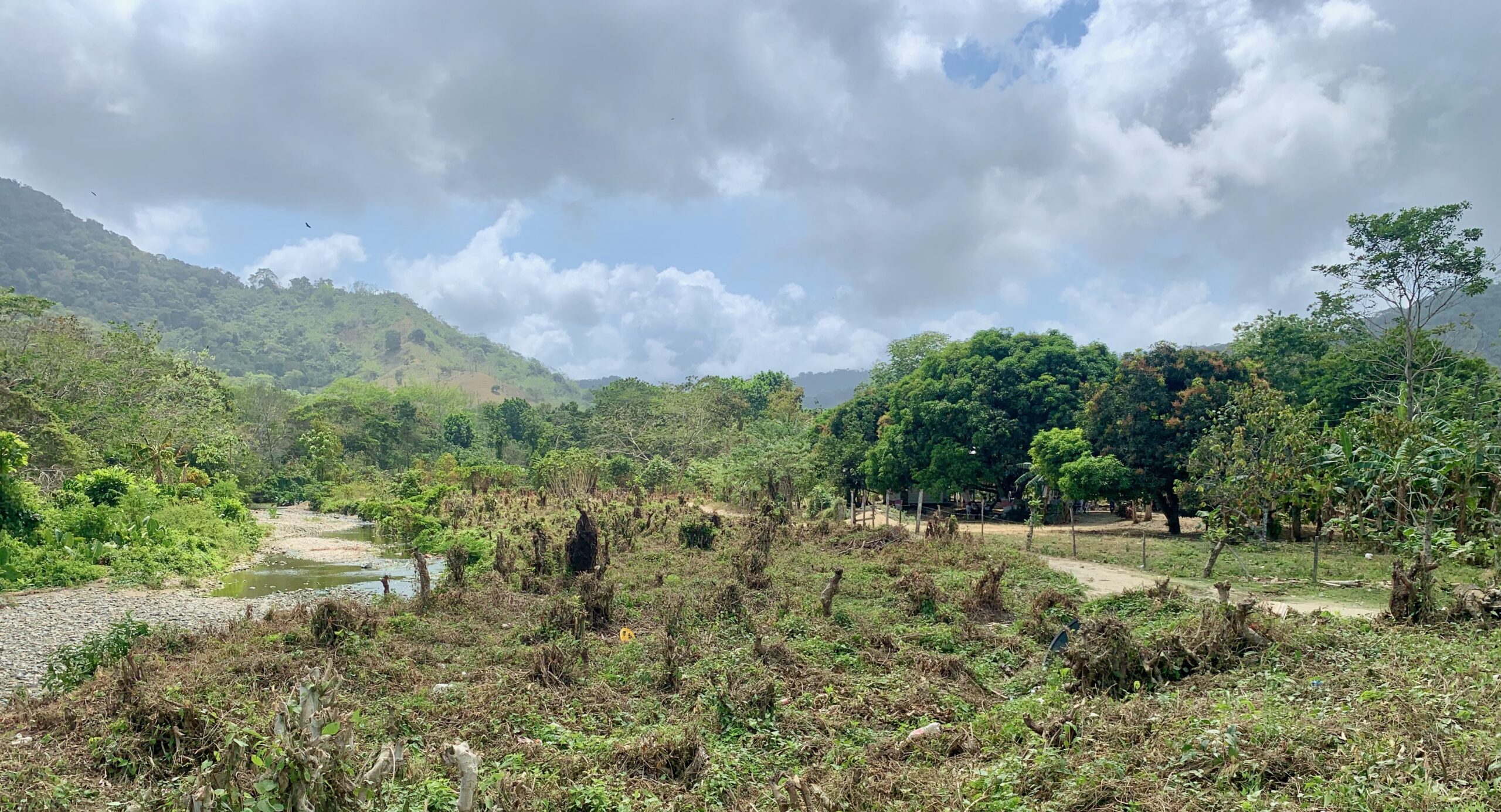
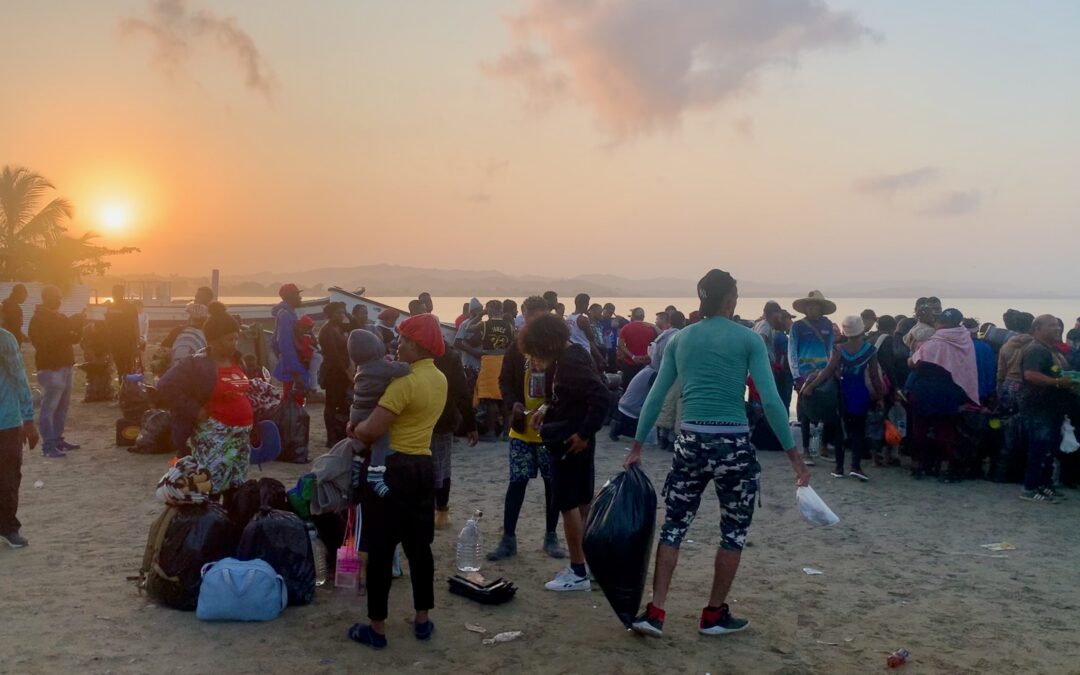
A fine report, will u continue to track the migrants.
I’d like to but I’m not sure how to. I’m in Panama now and brooding as to how and I might pick up the trail again, so to speak. But it is certainly a theme of the region, and of my trip, to which I wish to return. I had not been expecting to be writing about it until closer to the Mexico/US border but its out there much earlier. Hopefully, I will be able to keep you posted, as the saying goes.
Excellent piece. chum!
Thanks very much. I’d like to follow up and am brooding as to how I might do that….
Super piece of writing Peter, keep them coming!
Hola! Miss Cox — nice to have you on board!